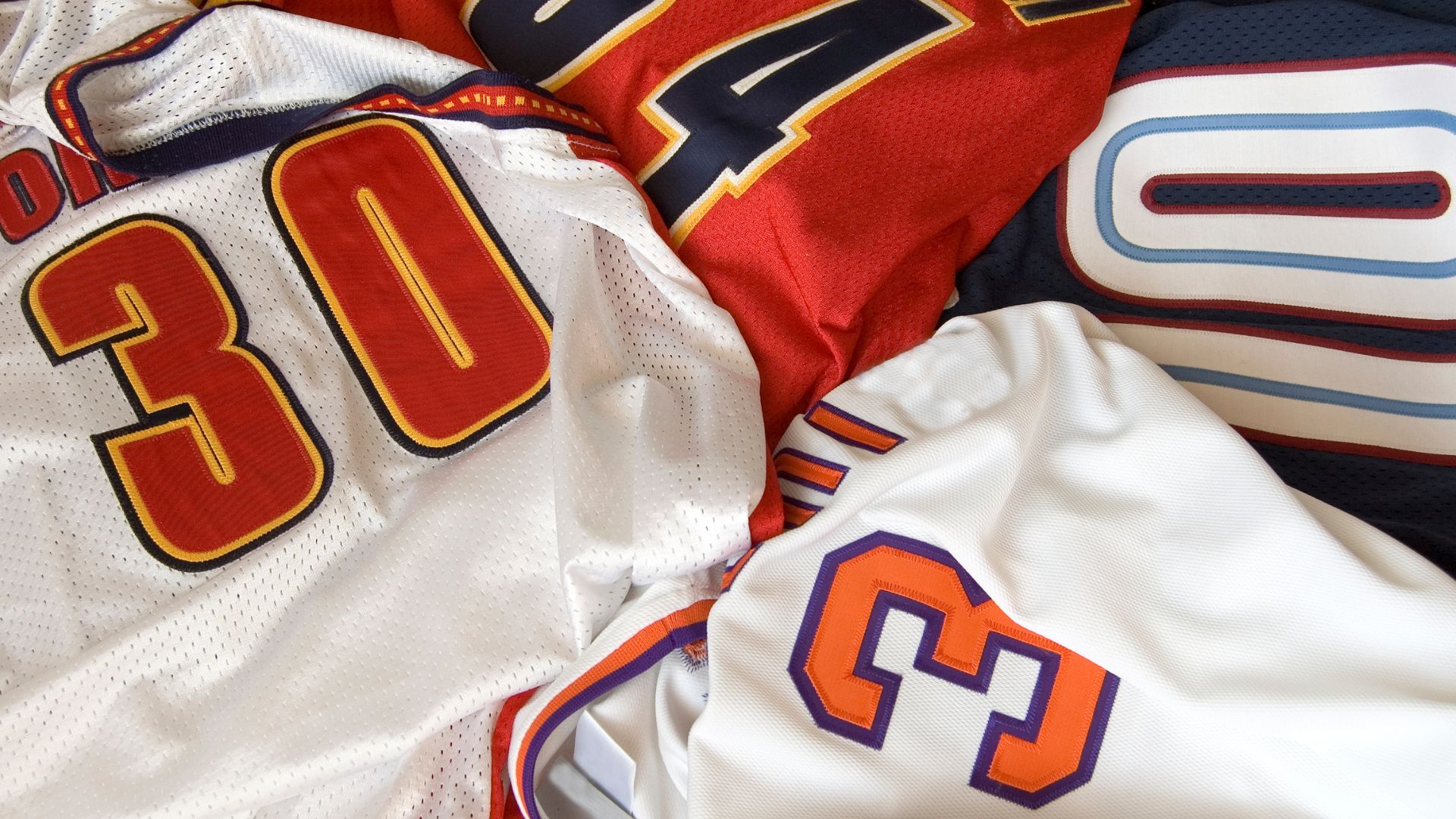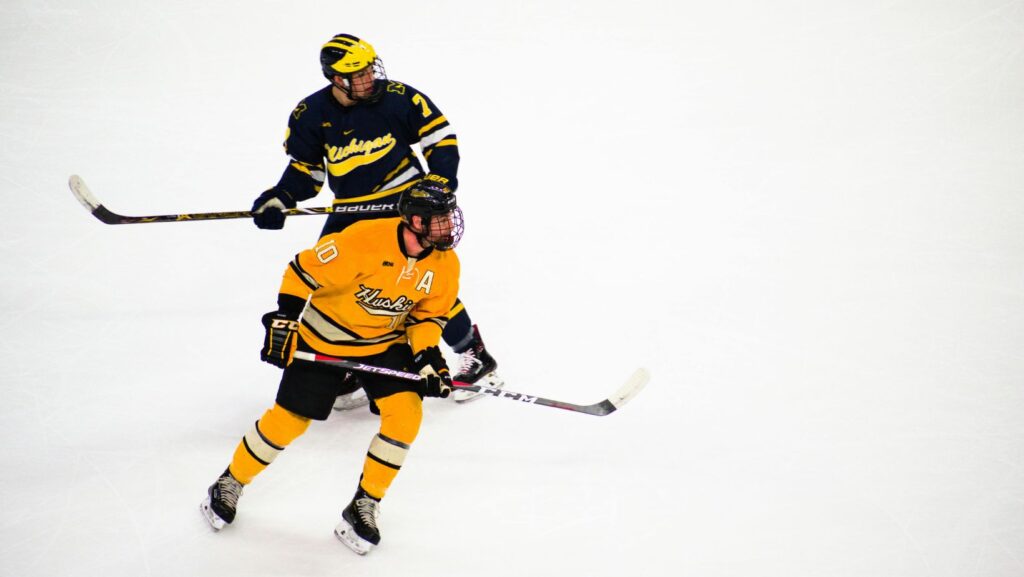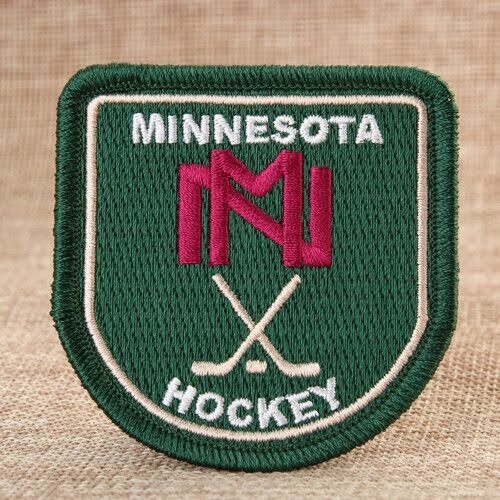Hockey jerseys represent a blend of performance, durability, and style. Understanding the distinctions between jerseys worn by pros and those made for amateurs can significantly enhance your playing experience, regardless of your skill level.
Let’s dive into the key distinctions to help you make an informed choice.
Key Differences in Materials
Pro-level hockey jerseys typically use advanced, high-performance materials designed to withstand the rigors of professional play.
These jerseys often feature a blend of polyester and other synthetic fibers with superior durability, flexibility, and moisture-wicking properties. The fabric is engineered to be lightweight yet strong, ensuring players can move freely without compromising protection.
Amateur hockey jerseys usually employ more basic materials. While they still use polyester, the quality and weave of the fabric may not match the high standards of pro-level jerseys. These jerseys might feel heavier and less breathable, affecting comfort and performance during intense play.
Whether you’re looking for a top-tier professional jersey or a more personalized hockey shirt for casual play, understanding these material differences can help you make an informed decision.
Fit and Sizing
Understanding these differences can help players and teams make informed decisions when selecting jerseys, ensuring they choose the option that best meets their needs and enhances their performance on ice.

To summarize the key differences in fit and sizing:
Pro-Level Jerseys
- Tailored, contoured fit
- Designed to accommodate protective gear
- A wider range of sizes, including tall and short options
- Incorporate stretch panels for flexibility.
Amateur Jerseys
- More relaxed, standardized fit
- Less precise sizing
- Limited customization options
- May lack advanced stretch materials
Durability and Construction
Pro-level hockey jerseys often employ advanced stitching techniques to enhance durability and performance. Double stitching reinforces high-stress areas like the shoulders and elbows, ensuring the jersey can withstand the rigors of professional play without tearing or fraying.
Additionally, pro-level jerseys frequently incorporate reinforced seams and zigzag stitching, offering flexibility and strength in areas that require a lot of movement.
Amateur jerseys typically use single stitching, which is less robust but sufficient for recreational use. These jerseys may not hold up as well under intense physical activity but are cost-effective and adequate for non-professional players.
Ventilation and Moisture Management
Alt Text: two professional ice hockey players on the rink
Pro-level hockey jerseys incorporate advanced ventilation features to enhance player comfort and performance. These jerseys often use strategically placed mesh panels to promote airflow, typically in high-sweat areas such as the underarms, sides, and back.

Manufacturers also employ moisture-wicking fabrics that actively pull sweat away from the skin, creating a cooling effect crucial for maintaining peak performance.
Key Ventilation Features:
- Pro-Level Jerseys: Advanced ventilation with mesh panels; moisture-wicking fabrics; lightweight, breathable materials.
- Amateur Jerseys: Basic polyester fabrics without advanced moisture-wicking properties; poorer breathability leading to overheating and discomfort.
Design and Customization
Pro-level hockey jerseys often feature logos applied using advanced techniques such as tackle twill, where the logo is stitched onto the jersey using high-quality thread. This technique ensures durability and a professional appearance.
In comparison, amateur jerseys frequently use screen printing or heat press methods for logo application, which may not offer the same level of durability and can fade or crack over time.
Custom patches provide another professional choice for hockey jerseys’ logos. You can choose different materials, such as PVC patches or embedded patches etc. They’re durable, resistant to breaking or deformation.
Exclusive patterns for custom patches can be artfully devised to align with a team’s specific demands. From team logos to player numbers, they are more personalized than traditional logos. Whether in training or competition, they can show the unique style and lasting vitality of the team. Come to GSJJ and place an order to get it!
Care Instructions
When caring for your hockey jerseys, may it’s for pro-level hockey or amateur jerseys, it’s important to avoid certain cleaning products and methods to maintain their quality and longevity.
Here are some key points to consider:
- Avoid Harsh Detergents: Steer clear of bleach and strong chemical detergents. These can break down the fabric fibers and cause colors to fade.
Instead, use mild, sports-specific detergents to handle sweat and odor without damaging the material.
- Skip Fabric Softeners: Fabric softeners can leave a residue that affects the jersey’s moisture-wicking properties. This residue can also attract dirt and grime, making the jersey harder to clean.
- No High Heat: High temperatures can shrink the fabric and damage logos or numbers. Always wash jerseys in cold water and air dry them.
If you must use a dryer, select the lowest heat setting and remove the jersey promptly to avoid wrinkles.
- Avoid Ironing: Direct heat from an iron can ruin the fabric and any printed or stitched elements. If you need to remove wrinkles, use a steamer on a low setting or hang the jersey in a steamy bathroom.
- Stay Away from Dry Cleaning: The chemicals used in dry cleaning can be too harsh for sports jerseys. Stick to home washing methods that are gentler on the fabric.
With these guidelines, you can ensure your hockey jerseys remain in top condition, ready for the next game or practice.
Expert Tip: Always start by checking the care label inside the jersey. Manufacturers provide specific instructions tailored to the materials and construction of the jersey.
Final Whistle on Jersey Choices
Pro-level and amateur hockey jerseys differ significantly in materials, fit, durability, ventilation, design options, and price.
Understanding these differences helps you make an informed choice, ensuring you select the jersey that best meets your needs and preferences.

